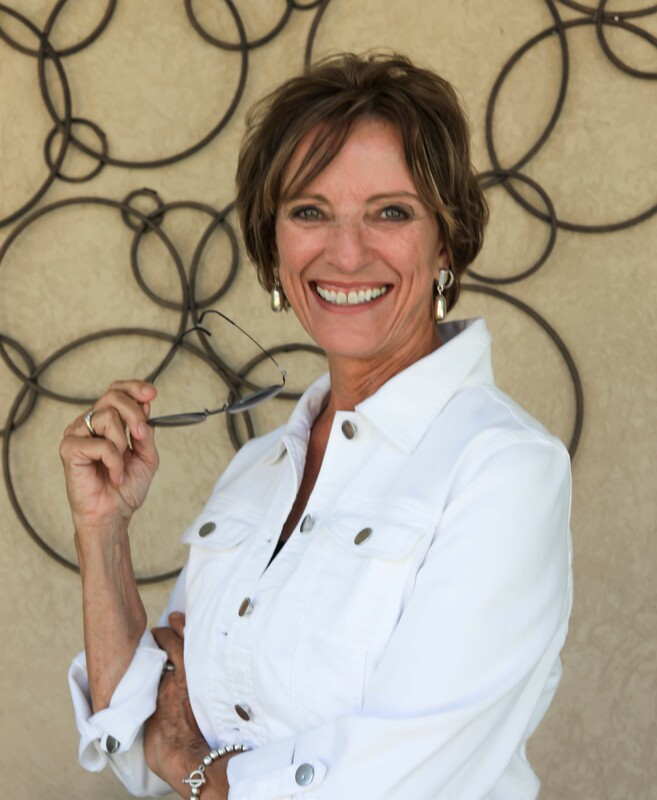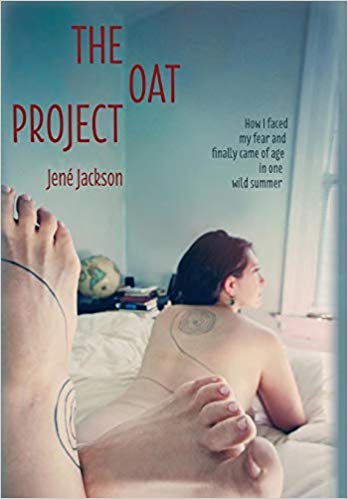 Jennifer Goble is a story writer. Note—not a storyteller, but, story writer. People tell their stories, and she writes them. Data for her dissertation came from women stories about their family systems including a dad, mom, sisters, and no brothers. Jennifer has a Ph.D. in Counseling Education from Colorado State University. Her career included teaching, school counseling, and twenty years as a therapist in private practice. Her primary dissertation research pertains to women raised with only sisters, no brothers. Married and the mother of three brag-worthy adults, and seven sweet grandchildren, Jennifer is happiest when life has order and kindness. She has many stories about thirty years as a farm wife. and memories of renovating an Andrew Carnegie Library and restoring it to include her home, a three-room bed and breakfast, and counseling center. Jennifer is grateful to be alive, healthy, and contributing. My Clients…My Teachers: The Noble Process of Psychotherapy  My Clients…My Teachers: The Noble Process of Psychotherapy, is her first book. It includes stories of her counseling client’s (permission given in writing, of course). Every story closes with what Jennifer, the counselor, learned. Currently, she is writing stories as told by rural women. Each woman tells her personal non-guided story, and Jennifer writes their words and posts them on www.jennifergoble.com. It is a delightful project, and the best part is hearing what falls between love and loss while growing up in small towns or on farms. It took retirement for Jennifer to exchange clinical terms for creative prose. She began a weekly newspaper column titled Mental Matters. It was one way to offer solutions without the calming ambiance of a counseling room. Down to nuts and bolts, “Dr. Goble” is a skilled co-dependent. Get paid for writing? What? She writes for others benefit, not herself. Also, she is not a saleswoman. She accepted her lack of salesmanship when, as a young farm wife, couldn’t sell industrial hand-cleaner to her kind farmer uncle who had black grease from fingertips to elbow. The good news, after six years of pro bono she does now get a penance for the column, and in January, with fearful apprehension, asked for a pay increase. Anxiety and doubt clouded her mind as she sent the email. She stared at the inbox and feared she would need to choose between status-quo or quitting. The response popped-up within five minutes and the editor asked if Jennifer could wait until the new budget year in July. OMGoodness—she did it, she asked, and the ceiling didn’t collapse. Now, she can fear July. Ridiculous? YES. She self-published, primarily because she lacked patience, thick skin, and time (she’s old) to jump-through-the-hoops of finding an agent. When an agent wrote, “Who would want to read stories like these?” she conceded; she didn’t have the tenacity to play the query/wait/deflate game. When asked, “When is book two?” Her answer is, “Never. I didn’t think the first one was much fun.” She is proud of her book and especially enjoyed connecting with clients for their written permission. Once the yellow and orange book with an adorable stick figure on a green sticky note was in her hands, marketing gave her anxiety. Signings were fun but not profitable. Speaking gigs and bookclub invites reaped more sales, but Web and Amazon results were meager. The ledger ink is still red. Jennifer has tried her hand at fiction, but real-life characters and plots seemed more enticing than those imagined. With the help of her critique group and listening to many fiction authors at book festivals, she finally got it: Parts and pieces of real people create fictional characters. J. A. Jance said, “With my characters, I get even.” Now, Jennifer feels a glimmer of excitement when flirting with some ‘novel’ thoughts. Imagine a sixty or seventy something protagonist with decades of lessons learned and unlearned, financial fears, deceased parents and siblings, dreams of college, sexy husband or new lover, flaming hot bookclub, hormones for libido, and grandkids who tell her how to dress. Don’t women of all ages deserve relatable books giving credence to their earned wisdom? Wouldn’t they enjoy stories to remind them they aren’t dead yet? Can you see a series? They say, “Write what you know.” You can follow Jennifer via her website, Facebook or Twitter. Where to Buy My Clients…My Teachers: The Noble Process of Psychotherapy
0 Comments
 Margaret Mizushima is the author of the acclaimed Timber Creek K-9 Mysteries, which have been nominated for several awards including the RT Reviewers’ Choice, Colorado Book, and the Silver Falchion. Kings River Life listed her fourth, Burning Ridge, as a Best Book of 2018. Margaret serves on the board for the Rocky Mountain chapter of Mystery Writers of America, and she lives on a small farm in Colorado with her husband and a pack of dogs. She can be found on Facebook/AuthorMargaretMizushima, on Twitter @margmizu, on Instagram at margmizu, and on her website at www.margaretmizushima.com. Most of us have heard it before: “I want to write a book, but I just don’t have time.” Yes, I agree that it takes a lot of time to write a book, but it also takes so much more than that. And if you truly want to write one, you can get started by laying the groundwork even now, in what little spare time you’ve got. My writing career evolved over so many years, it’s hard to pinpoint when it began. Back before the turn of the century when I worked as a speech pathologist, I used to stand in the cashier line at the grocery store and use this “leisure time” to search for my next weekend escape in the form of a mass-market paperback. (Only a working mom of two thinks of grocery shopping as leisure time.) I’ve been an avid fiction reader my entire life and have used books to visit exciting places and meet entertaining people, but in those days I didn’t think it possible that I could write a novel myself. But reading is an essential first step. Shortly before I retired, I used weekends to begin writing the first chapter in a nonfiction work, until I became distracted by this wild idea for a story. During the next six months, I eked out every spare minute I could to write my first novel, terrible as it was. I was hooked—I set aside that nonfiction book and never looked back. But I also realized I had a lot to learn about writing fiction. After retirement from full time work, I took a part time job and started studying the art and craft of fiction writing. I attended writing conferences, took creative writing classes at my local university, participated in critique groups, and studied how-to books on writing. When I first told friends and family that I planned to write a novel, I received a wide range of responses, from skeptical raised eyebrows to words of encouragement. I soon learned how easy it was to become discouraged. Some people love to burst the dream bubble of others, and I learned to avoid discussing my plans with those naysayers. When I first started writing, I sought feedback from family and close friends, but soon I ventured into critique groups, a necessary stage in any writer’s life. I learned how to find other writers who would give honest and responsible feedback to help me improve my craft. I wrote many manuscripts in a variety of genres over the years, but the turning point came when I decided to write a mystery. I read and outlined the works of bestselling authors I loved: Sue Grafton, J.A. Jance, Margaret Coel, Michael Connelly, and Lee Child, to name a few. These wonderful mysteries and thrillers provided inspiration, but it took sitting in on a conference workshop on how to write a mystery to get me started. They say write what you know and research before you write what you don’t. I took this advice to heart. I decided to set my mystery series in a small mountain town—similar to the one I grew up in but fictional—and to include a veterinarian as one of the protagonists, because I’m married to a vet. I wanted to write a police procedural, so it only made sense to create a K-9 Deputy and her dog, which required a great deal of research on my part and some awesome consultants who agreed to help. But the fact that I’d lived around dogs, observed their behavior, and participated in search and rescue training with a couple of our dogs certainly helped. Thus the Timber Creek K-9 Mysteries featuring Deputy Mattie Cobb, her K-9 partner Robo, and veterinarian Cole Walker were born. Although the process took years, I found first an agent and then an editor and publisher that I love. Crooked Lane Books and I released Killing Trail, book one in the series, in December 2015. We now have four books out with two more under contract. And it all started with that horrible manuscript written more than a decade ago that will never see the light of day. So if you want to write a novel, go ahead and get started. Read, educate yourself, write, seek critique, revise, repeat. Find like-minded people and friends who will encourage you along the way. You can do it, even if you have only a few hours each week to dedicate to the process. Go ahead and get started! Burning Ridge Colorado’s Redstone Ridge is a place of extraordinary beauty, but this rugged mountain wilderness harbors a horrifying secret. When a charred body is discovered in a shallow grave, officer Mattie Cobb and her K-9 partner Robo are called in to spearhead the investigation. But this is no ordinary crime—and they soon become the targets of a ruthless killer. Find Margaret on Instagram, Facebook, Twitter and her website Where to Buy Burning Ridge Jene' Jackson was raised all over the U.S. as a preacher’s daughter before finally rebelling. When she’s not working on her first novel and the sequels to her memoir, she’s belly laughing with friends, making art, photographing, singing jazz, or squeezing words from her teenage children while driving them home from school. She lives in Colorado Springs and even does yoga and hikes every now and then like a good Coloradan. You can connect with her on Facebook at facebook.com/JeneJ, on Instagram at instagram.com/spiralspiral, and at jenejackson.com. You can buy her book at https://www.amazon.com/Oat-Project-Faced-Finally-Summer/dp/0997925108/ Most of the time, I have to spiral into things, backwards, sideways, hurly burly; straightline goes awry. Writing has been no different. I was a reader, not a writer. Yes, I could pull “A” essays out of my head and hands in the hour before they were due. But the first time anyone ever suggested I had something unique came in college. When I apologized for what I knew would be a poor performance on a 3-hour essay test (history) because I had studied only thirty minutes, my professor said, “The content wasn’t there like usual, Jene’, but you write so well, I couldn’t tell. You have a gift for making complex concepts understandable, and you should use it.” I ignored him, of course. I was a singer, photographer, and reader; not a writer. Over a decade later, as the stresses of parenthood made it clear I needed time alone, I began to write. Essays moved into children’s fiction. A journal published an article and I wrote several picture books that got nibbles but no bites from agents. I connected with a local writers organization and honed my craft. Then, after six years of writing for children, with one question from one friend, I spiraled into what seemed like a frivolous project that became my first memoir, The Oat Project: How I Faced My Fear and Came of Age in One Wild Summer. When I met fellow mothers from my daughter’s school at a coffee group, they found out I had never been drunk--I was 37, a virgin-when-married mother of three children. They decided to throw a party to get me drunk, and as we planned it, one of them asked, “What else have you never done?” That question became a list of 25 “wild oats” I’d never sown--I had been a leader, preacher’s daughter who’d never rebelled--they wanted to do with me over the following summer. Rock concert, smoking (even marijuana!), dancing, watching porn and more, they were nothing compared to the fears I faced as I resisted then embraced transformation. I wrote the whole summer, journaling and recording as it happened in composition notebooks that, when transcribed, became a 500-page manuscript. It took me eight years to edit, through the end of my marriage, my mother’s battle with cancer then death, job changes, depression and anxiety, learning to navigate single motherhood and becoming my real self. But finally, in 2016, after 18 months of morning and evening writing, I wrote “The End.” Despite solid interest from agents, I decided to publish it myself, because I knew in my gut it needed to be in the world as it was. It took several months to produce, and I stuck with my decision to make the cover a photo of the last task on the wild oats list: a tattoo. The launch party was a huge success, and though building sales has been much more difficult than I imagined, the book is beginning to find its audience. Per a request from a rockstar agent, I’m currently working on a companion guide to help others create and do their own Go Wild list. Why does all this matter? Because life matters. So often, we writers judge every moment we are not putting words on a page. I actually don’t believe in procrastination any more. Over and over, I look back and see that where I thought I was going too slow, it was exactly the right pace, for myriad reasons. For example, a few months after The Oat Project came out, I anguished over my inability to build sales, and my therapist said, “How can you market a book about you when you don’t love yourself?” So I’ve spent the last two years working hard to face and process my trauma and wounds, to heal, and to finally, really, love myself. The result has transformed my writing and writing life. Instead of guilt for not getting to the page, I notice roadblocks or needs that resolve when I give them attention and care. I share this with you so that perhaps it helps you to shed your shoulds, to love your self and your writer self wherever you are in the process, and to know that whatever it looks like is beautiful. I still flail and trip around and all over pages, but instead of becoming blocked or frozen, I keep going. (I’d like to fistbump you all right here.) Apart from the need to “get it out of my head and onto the page,” I am inspired by authors who weave everyday resonance and extraordinary wisdom into fiction. Frank Herbert’s Dune series (the original six), Ursula K. Le Guin’s works, Guy Gavriel Kay’s The Summer Tree, Martha Grimes’ Richard Jury series, and Tolkien’s works: these I’ve read many times over. They inspire me to learn and grow so that my writing resonates like these, so my readers say, “I never thought about it that way.” The Oat Project A former evangelical Christian and virgin-when-married mother of three finds the courage to explore her wild side, at 37. Rock concert, smoking (even marijuana!), dancing, watching porn and more, the 20-plus 'wild oat' tasks she tries over one summer are nothing compared to the fears she faces as she resists then embraces transformation. Where to Buy The Oat Project Jim Campain spent the majority of his career devoted to working with children, youth, and families as a mental health provider. His interest in writing the Mysterious Miss Snoddy series is to introduce young readers to basic historical facts about our country by captivating them with an exciting mystery. His wife Jan is his inspiration and they spend their time together in Colorado and Louisiana, enjoying the best the mountains and gulf have to offer. One of my first loves in life was a tablet. Not a Surface Pro 6, Samsung Galaxy, or Apple iPad but a Big Chief tablet. It wasn’t wireless with a chrome case and ten inch screen. Instead, it was bright red with the face of a noble Native American chief gazing sternly around my first grade classroom. I was in country school with twelve other students, grades K-8. Odds are I had ridden my pony on the opening day of a new school year, with my Big Chief tablet safely tucked away next to number 2 pencils, a water color paint set, and a bologna sandwich. With my name printed on the impressive cover, I opened it up to reveal wide- lined, off-white pages. The alluring scent of a new tablet was unlike anything I had experienced before. Granted, some sheets had knot-like blemishes the size of half-dollars, but that mattered not. There were assignments to complete, problems to solve, and, most importantly, stories to create. Fast forward some fifty years. I had finished presenting a conference workshop at a western university and was approached by members of a California community. They asked me to come to their organization and train them in the material I had just presented. I had a dozen reasons why others could do a better job than me and gave them names of people I considered more expert on the topic. “No, we’d like you to come,” they responded. I persisted to assure them that others had more data, authority, and proficiency, but they would have none of it. Then they said the five words that changed everything for me: “Just tell us your story.” That simply sentence unlocked unforeseen opportunities and released reluctance and doubts within me. For the next few years, I had the privilege to teach, train, and consult in sixty communities across twenty states. I believe it was because stories allowed me to connect with others on a deeper and more meaningful level. “Stories go far beyond simply revealing facts and data — stories emotionalize information. They give color and depth to otherwise bland material. [Readers] become emotional owners of the story you are telling,” (Peter Guber). Apparently, the story line I wove into the data that day struck a chord with them. I wrote a great deal during my career as a clinical social worker. However, my writings were limited to case notes, client histories, behavioral observations and assessments, clinical evaluations, and court reports. Only after I retired did I venture into the world of fiction. In the past two years, I’ve had three middle grade historical fiction stories published by Hot Chocolate Press, and a fourth coming in the Spring of 2019. This series, The Mysterious Miss Snoddy, tells the stories of a teacher with a questionable past, and three of her students who are determined to uncover a secret she’s been hiding. My goal, as an American history buff, is to capture middle grade readers with an adventure while making important events in our country’s past come alive. I like to think of the series as history wrapped in a mystery. The inspiration for the series stemmed from a casual conversation with my wife when she mentioned that her older brother had an elementary teacher named Miss Snoddy. Apparently, little was known about this woman. She was somewhat of an enigma, however, the memory of the high-topped, black, lace-up shoes she wore everyday left a lasting impression. With three grandchildren aged nine and ten, I realized what they could and would do with the poor woman’s name. From there, I created her mysterious past and wed it to history. Voila! A series was created that has found its way into twelve school and public libraries. This series has been enjoyable to write and has emerged with a certain ease and very little angst. It may be that as I’ve studied the science of writing, I’m released to let the art of writing flow more freely. I’ve been fortunate to learn from many excellent authors and teachers in northern Colorado and have enrolled in classes offered by Northern Colorado Writers (NCW). The finer points of writing, as well as the gestalt of defining oneself as an author, has been an empowering and enlightening experience. My business cards now include the title, Author. I believe in the Creator and that a creative gene resides in all of us. I find it interesting how many people enthusiastically answer, “Yes!” when I ask if they have a story in them. There may be any number of keys to unlock that creative spark … writing did it for me. When not appreciating the mountains of Colorado, Jan and I spend our time in Louisiana Cajun country enjoying the Gulf. The potential for a new story rests around every peak and bayou. The Mysterious Miss Snoddy: The Orphan Train Ava, Ellie, and Griffin are very fortunate children. They have families, friends, a nice school, and enjoy many privileges in their lives. When a classroom speaker tells them about the Orphan Train, they become interested in the children who rode the train in search of loving families. After learning that not everyone who adopted children treated them well, the kids are angered and decide to do something about it. The three friends convince Miss Snoddy to take them back in time to purchase tickets on the Orphan Train so they can protect innocent children from evil-doers. Everything goes as planned until the unthinkable happens and their friendship is threatened. Ava, Ellie, and Griffin must dig deep and trust in each other, Miss Snoddy, and new friends in order to survive. Where to Buy The Mysterious Miss Snoddy: The Orphan Train |
AuthorI'm generally pulled in a million different directions and I wouldn't trade it for the world. Here's a glimpse of my life - hope you enjoy it! And if there's a big lapse between posts, well, that's the way life goes in Amy's world. Archives
October 2022
Categories
All
|
|
Copyright 2024 by Amy Rivers. All rights reserved. |
 RSS Feed
RSS Feed